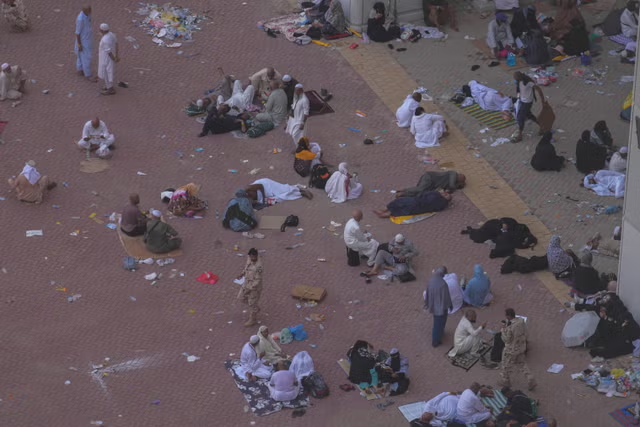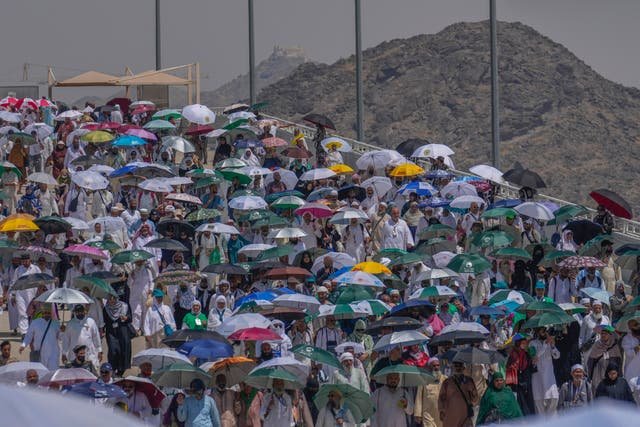Over 1,000 pilgrims have lost their lives during this year’s Hajj in Saudi Arabia, with temperatures soaring to a sweltering 51.8C in Mecca recently.
Approximately 1.8 million Muslims participated in this extensive, largely outdoor pilgrimage, a once-in-a-lifetime obligation for those who are able.
While the Saudi authorities have not yet provided an official death toll, reports indicate that around 10 countries have collectively reported 1,081 fatalities during the event.
At the Emergency Complex in Mecca’s Al-Muaisem neighborhood, crowds gathered to retrieve the bodies of their loved ones and seek information about missing relatives.
In a poignant scene outside the facility, an Egyptian man collapsed in grief upon learning of his mother’s death.
After an emotional outburst, he composed himself enough to call their travel agent for further assistance.
“He left her to die,” he shouted, referring to the agent. The crowd tried to calm him down.
A spokesperson solemnly announced the names and nationalities of the deceased, including individuals from Algeria, Egypt, and India. Only verified relatives were permitted inside to formally identify their loved ones.

According to an Arab diplomat speaking to AFP, the number of Egyptian fatalities has surged, surpassing 650, with 630 of them being unregistered pilgrims. Each year, tens of thousands attempt the Hajj through alternative means due to financial constraints preventing them from obtaining official permits.
Saudi officials have reported that they have removed hundreds of thousands of unregistered pilgrims from Mecca this month alone.
Out of around 150,000 pilgrims, Pakistan has recorded at least 58 deaths, a diplomat briefed on the tally told AFP. “I think given the number of people, given the weather, this is just natural,” the diplomat said.
Indonesia, which had around 240,000 pilgrims, said the nation’s death toll had reached 183 according to the Ministry of Religious Affairs. They added 313 deaths were due to heatstroke.

Khalid Bashir Bazaz, an Indian pilgrim, speaking near the Grand Mosque, said he “saw a lot of people collapsing to the ground unconscious”.
Deaths are not uncommon at the Hajj, There have also been stampedes and epidemics throughout the pilgrimage’s history. Each year, the Hajj draws hundreds of thousands of pilgrims from low-income nations, and illnesses can spread among the gathered masses, many of whom save their entire lives for the pilgrimage.
More than 1.83 million Muslims performed the Hajj in 2024, including more than 1.6 million from 22 countries, according to the Saudi Hajj authorities.
Saudi Arabia has allocated substantial funds for crowd management and safety measures during the annual five-day pilgrimage, but the large number of pilgrims poses significant challenges to ensuring their well-being.
Due to Islam’s lunar calendar, the Hajj shifts approximately 11 days earlier each year. By 2029, the Hajj will fall in April, and in subsequent years, it will take place during the winter months when temperatures are more moderate.
In 2015, a tragic stampede in Mina during the Hajj resulted in the deaths of more than 2,400 pilgrims, marking it as the deadliest incident ever recorded during the pilgrimage. Despite this, Saudi Arabia has never officially acknowledged the full extent of the tragedy.

